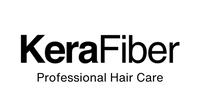What are hair follicles?
Hair follicles can be found all over the body, with the exception of the palms of the hands, the soles of the feet and the lips. “I don’t have a hairy nose, or ears!” you might protest, but au contraire, take a close look in the mirror under a bright light and you’ll see your nose, ears and even your cheeks are covered in hundreds of small, fine hairs.
Hair follicles use an oily substance, called the sebum, as lubrication to help them grow. Each hair follicle has a direct source of sebum, which is supplied by one or more sebaceous glands. Hair growing on the groin, armpits and areolae is also supported by lubrication from apocrine sweat glands, which (thankfully) are not present on the scalp.
Areas where hair growth is thickest, such as the scalp, have more sebaceous glands to support growth and maintain lubrication. Hair follicles are also supported by the arrector pili, the small muscle group that contracts to form goose bumps when you’re cold or scared, and stem cells at their base which regulate growth.
Hair follicles and hair loss

The hair itself is comprised of a protein called keratin, produced by the hair follicles in the outer layer of skin. Incidentally, hair thickening fiber is made from this very protein, making it an effective method of creating natural looking hair.
As the follicles produce new hair, the old hair is pushed through the surface of the scalp at approximately half an inch per month, or six inches over the course of a year. So, the hair you see is actually just a string of dead keratin cells being driven from the scalp, which is a lovely thought I know.
The average human head has between 100,000 and 150,000 hairs, with up to 100 naturally shed each day. Just think about the hairs on a hairbrush, or the hairs on your pillow in the morning; this alone is no cause for concern and is not a sign that you are losing your hair.
The hair follicle life cycle
Each hair follicle has its own cycle. At any one time up to 90 percent of your follicles are in the longest part of the cycle, the growth cycle, which lasts for two to three years. This cycle can be influenced by a number of factors, including illness, age and stress. Hair loss problems occur when an increasing number of hairs enter the resting phase, after which point the hair is shed.
The hair follicle lifecycle has three distinct phases:
- Anagen – the active phase of hair growth which typically lasts two to three years.
- Catagen – transitional hair growth between the active and resting phase which typically lasts three weeks.
- Telogen – the two to three month resting phase of the hair, after which point the hair is shed and replaced by a new hair in the anagen stage.
As we age, the growth or anagen phase shortens, reducing the rate of hair growth and increasing the number of hairs in the telogen stage. It is this that causes hair to thin. Thankfully, we live in the 21st century, when products like hair thickening fiber can give the appearance of thick, natural and healthy looking hair, whatever your age.







